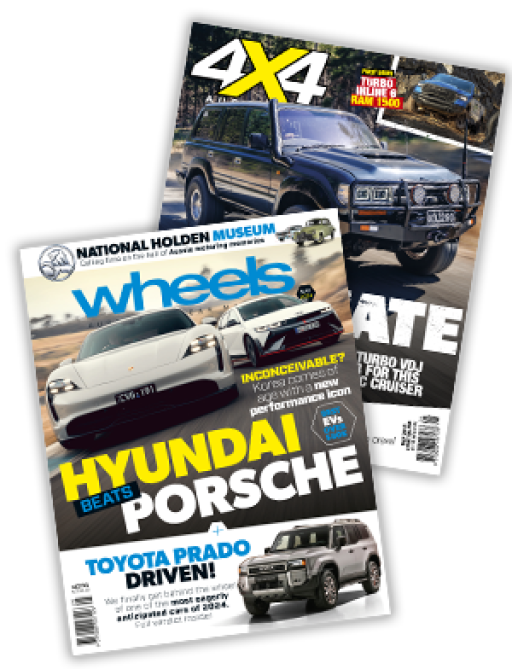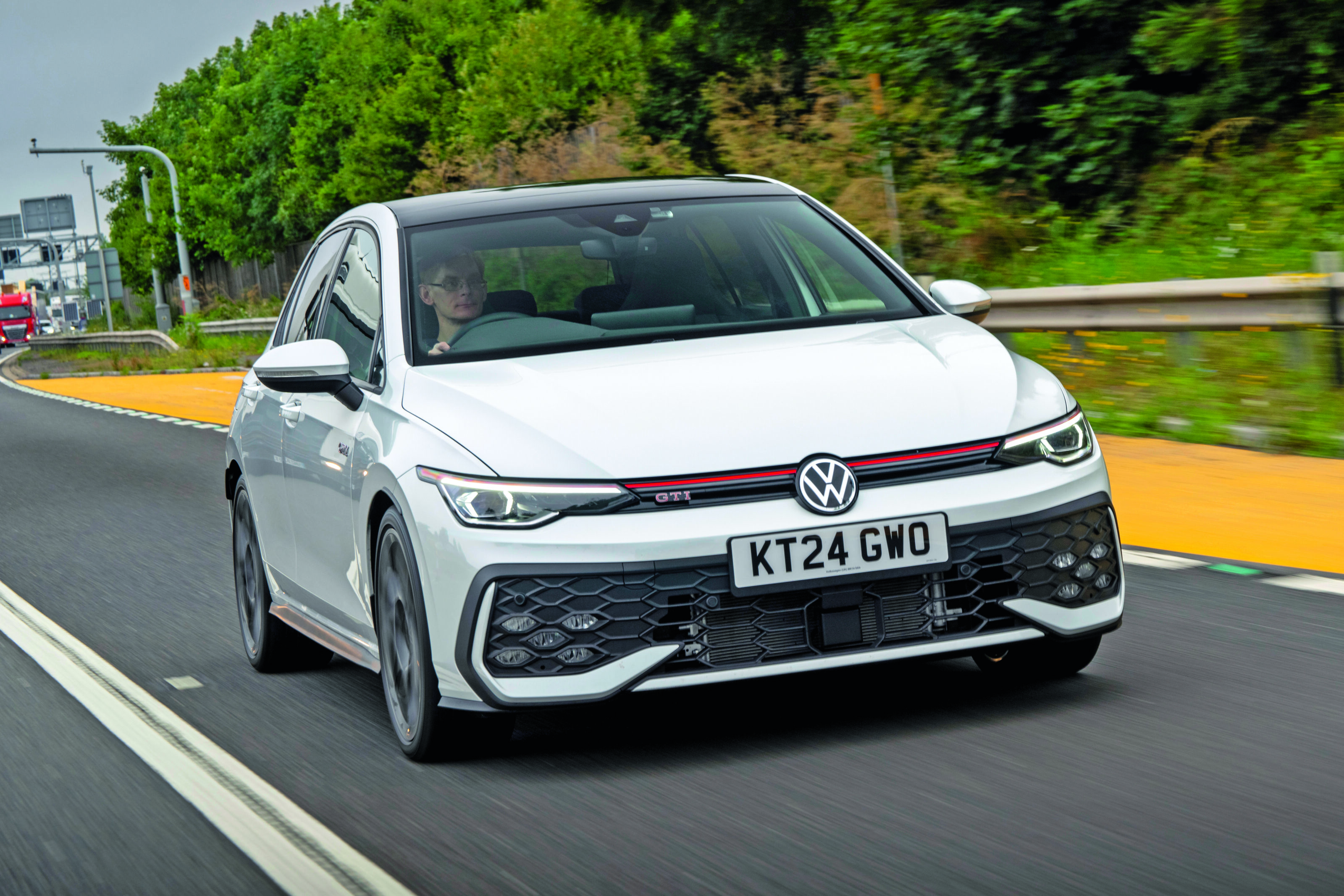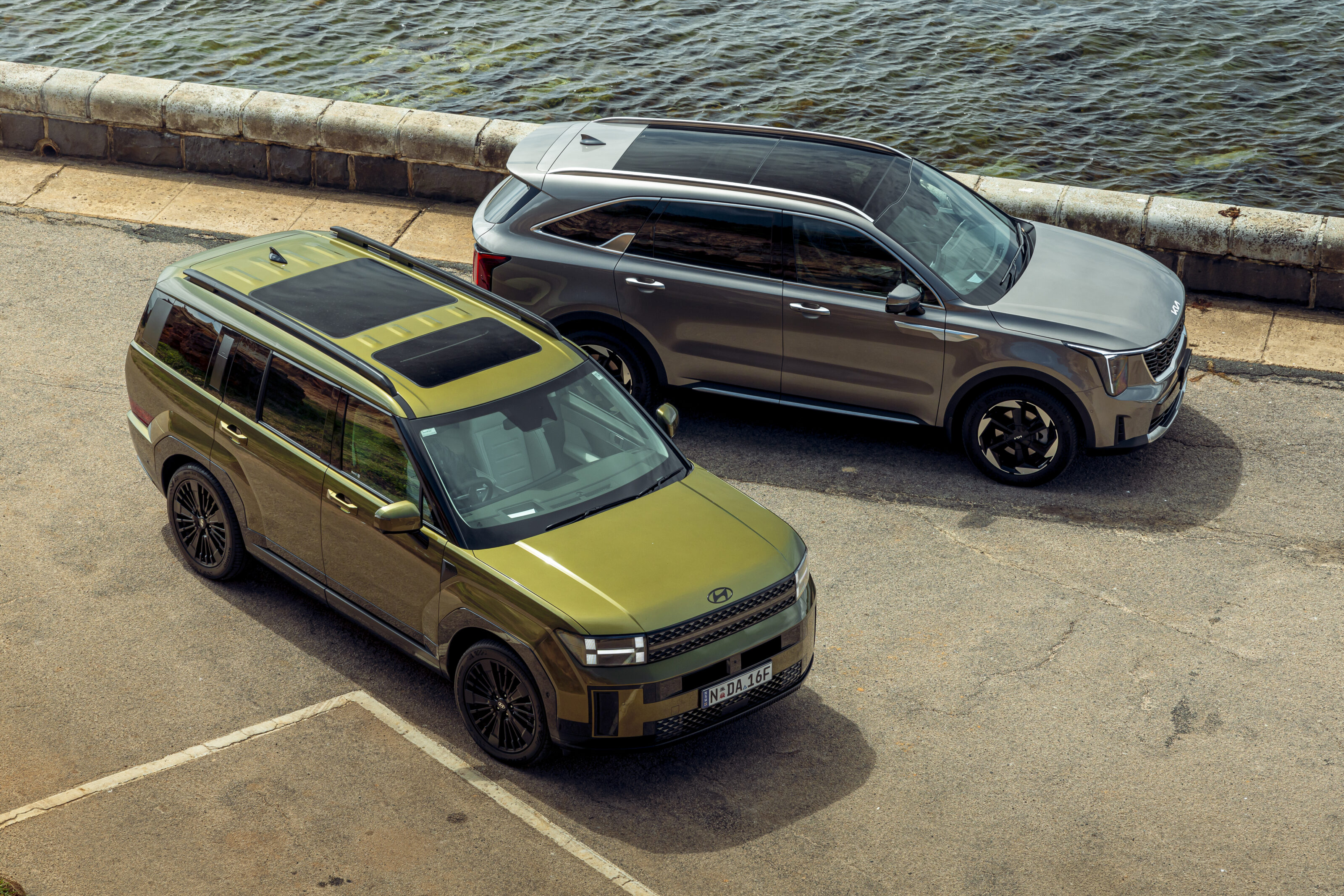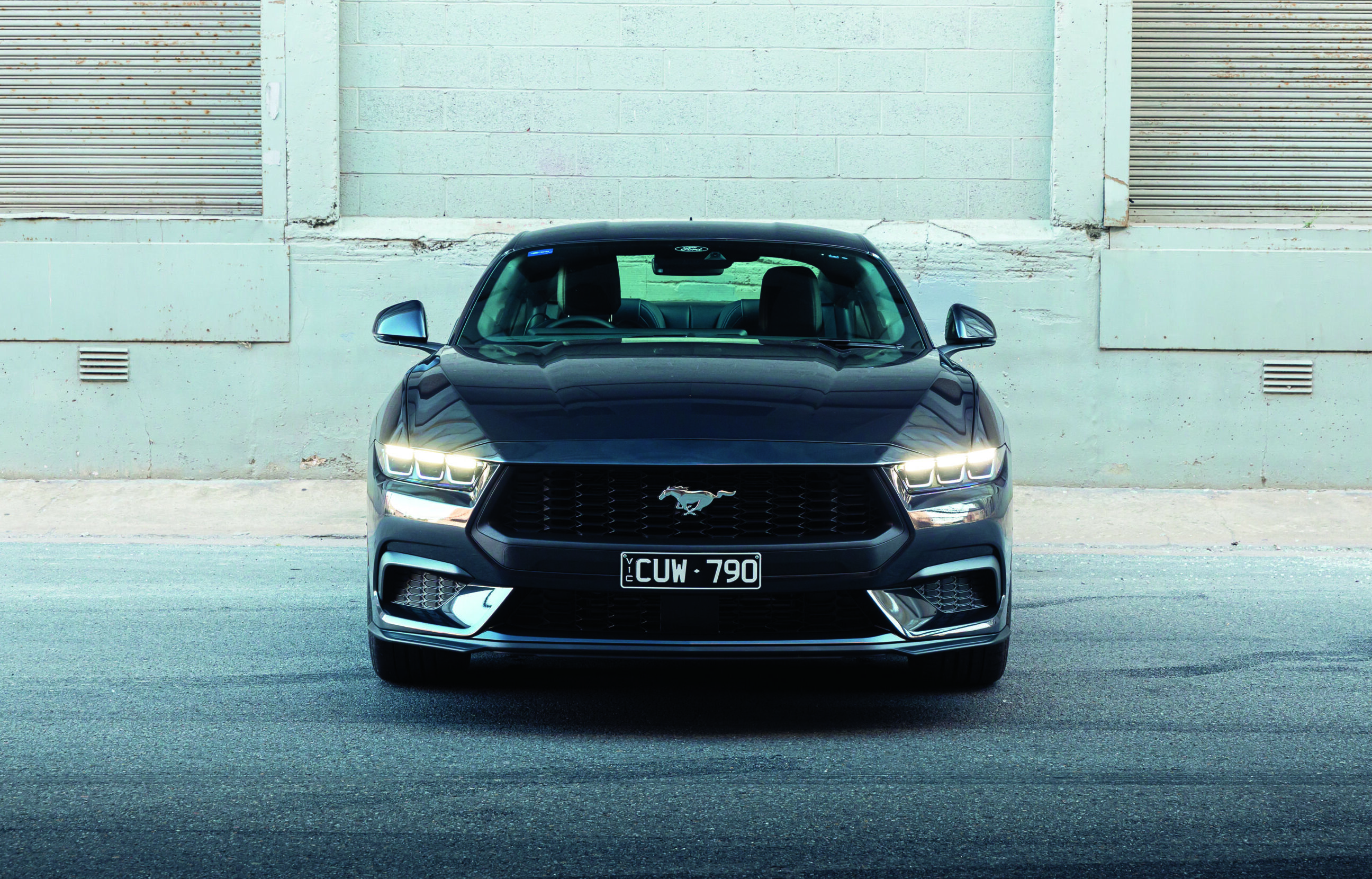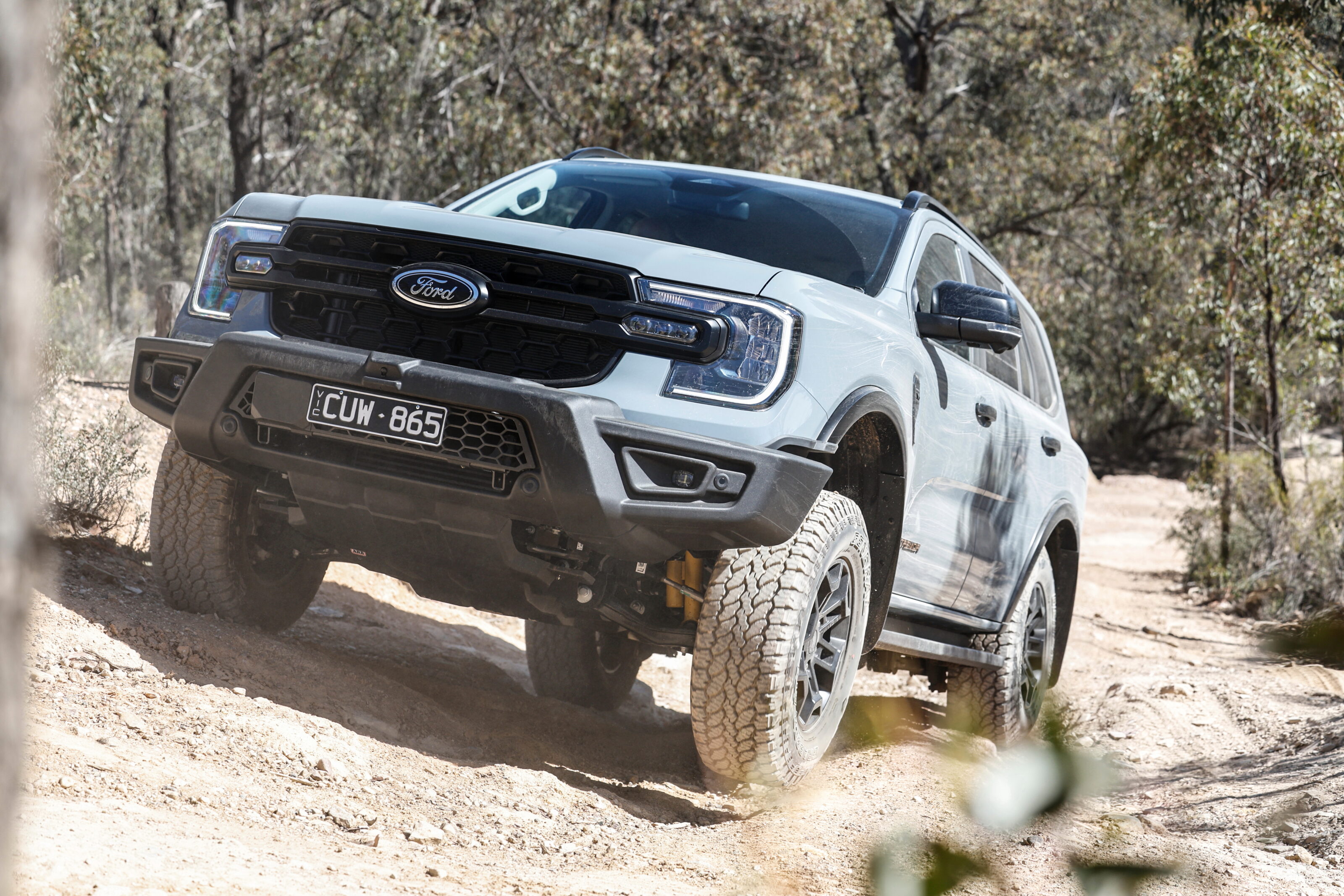
Things we like
- Seven seats make it better equipped for off-road family adventures compared with rivals
Not so much
- Extra height and off-road details make it thirstier than the Everest Sport
Perhaps it would be harsh to describe the Ford Everest Tremor as a knee-jerk reaction. It’s better than that would suggest, but since the UB-generation Everest launched here in late 2022, it has enjoyed something of a free pass. Its key rival, the Toyota Landcruiser Prado has, until fairly recently, been on runout, a geriatric opponent that fell way short of the Ford’s ability.
Knowing that the new Prado would be with customers in late 2024, Ford realised that it might need something extra to go into battle with Toyota’s Altitude version of the Prado, an off-road focused special that brought additional capability and attitude.
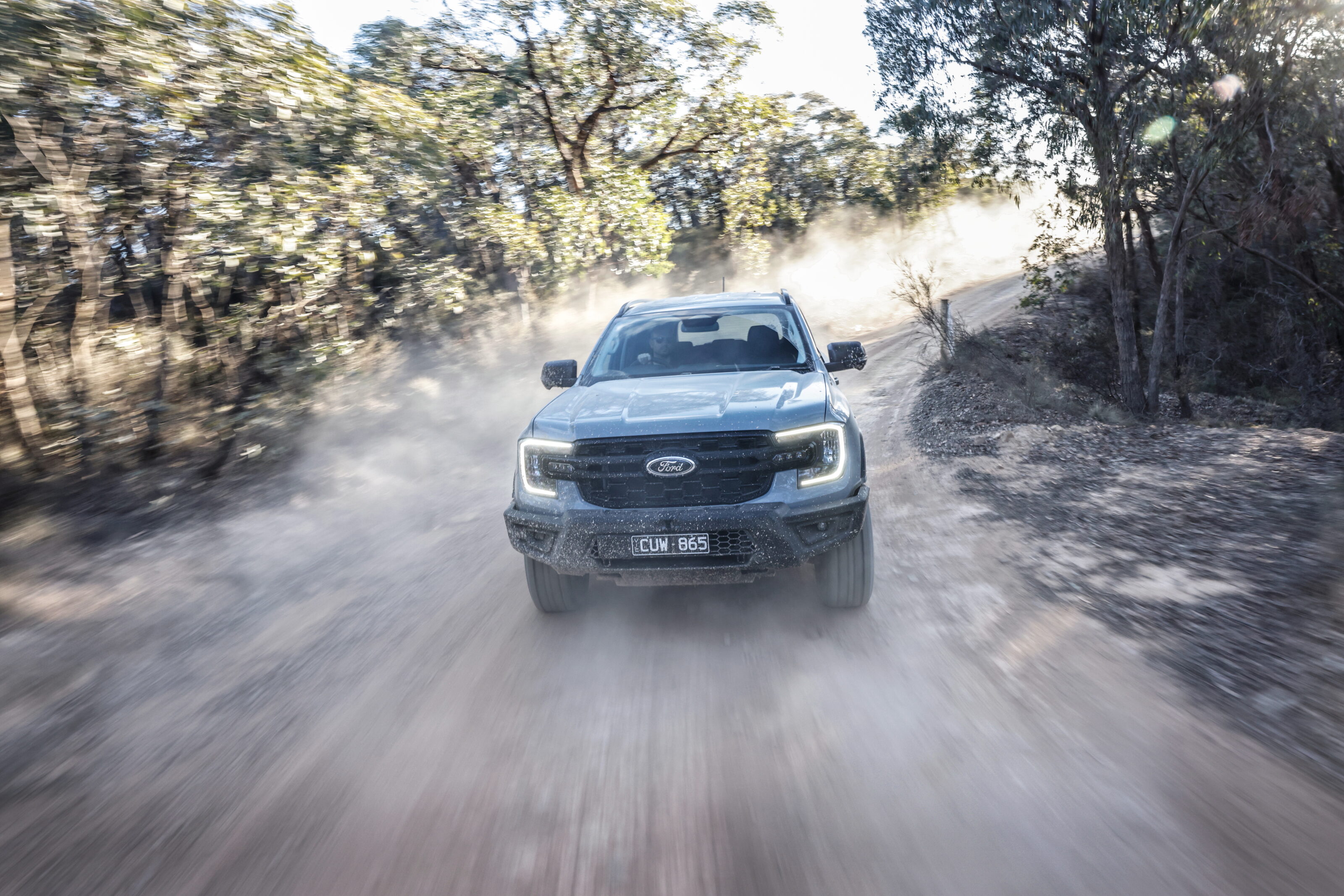
The Tremor template had been used before, as a special edition version of the Ranger, designed in that instance to temporarily plug a gap between the Raptor and the Wildtrak X models. This time round, the Tremor becomes a permanent fixture in the Everest line up, so Ford is taking it a bit more seriously.
One thing is for certain, it’s built on a solid foundation. The Everest carried off Wheels’ Car of the Year crown in 2023, impressing the judging panel with its sheer utility. Designed by Australians in Australia for Australians is a pretty tough set of attributes for rivals to replicate, even if the build for this one occurs in Thailand. Our January twin test between the Prado GXL and Everest Sport models merely underlined our belief that the Everest is the best big 4×4 on sale right in Australia right now. Aussie customers have responded too, with sales growing 76 per cent last year. That was an all-time volume record for the segment – something for Toyota to aim at.
Priced at $76,590 plus on roads, the Tremor sits near the top of the range, costing $2000 over a Sport trim and $4600 less than the flagship Platinum variant. Unlike the Ranger Tremor, it’s solely offered with the 3.0-litre V6 turbodiesel powerplant. It performs a subtly different role, largely due to the fact that aside from a single test mule, there’s no Everest Raptor in production guise.
The key attractions will probably be the 29mm lift in ride height over the standard Everest and a toughened-up look. Even if you never plan to take the Tremor up anything more arduous than an unsealed road, these two attributes will be enough to win plenty of admirers who merely want the most macho Everest variant.
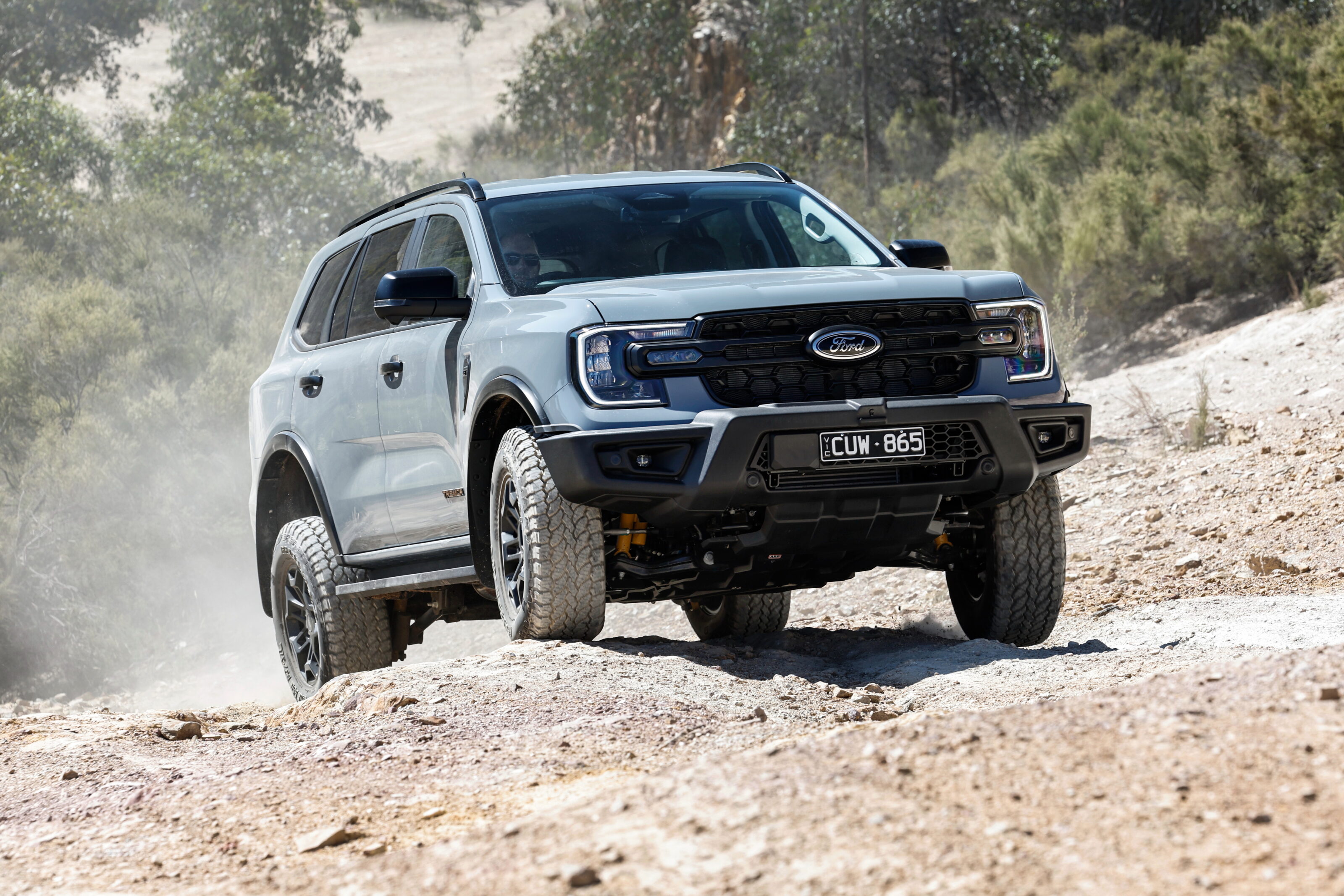
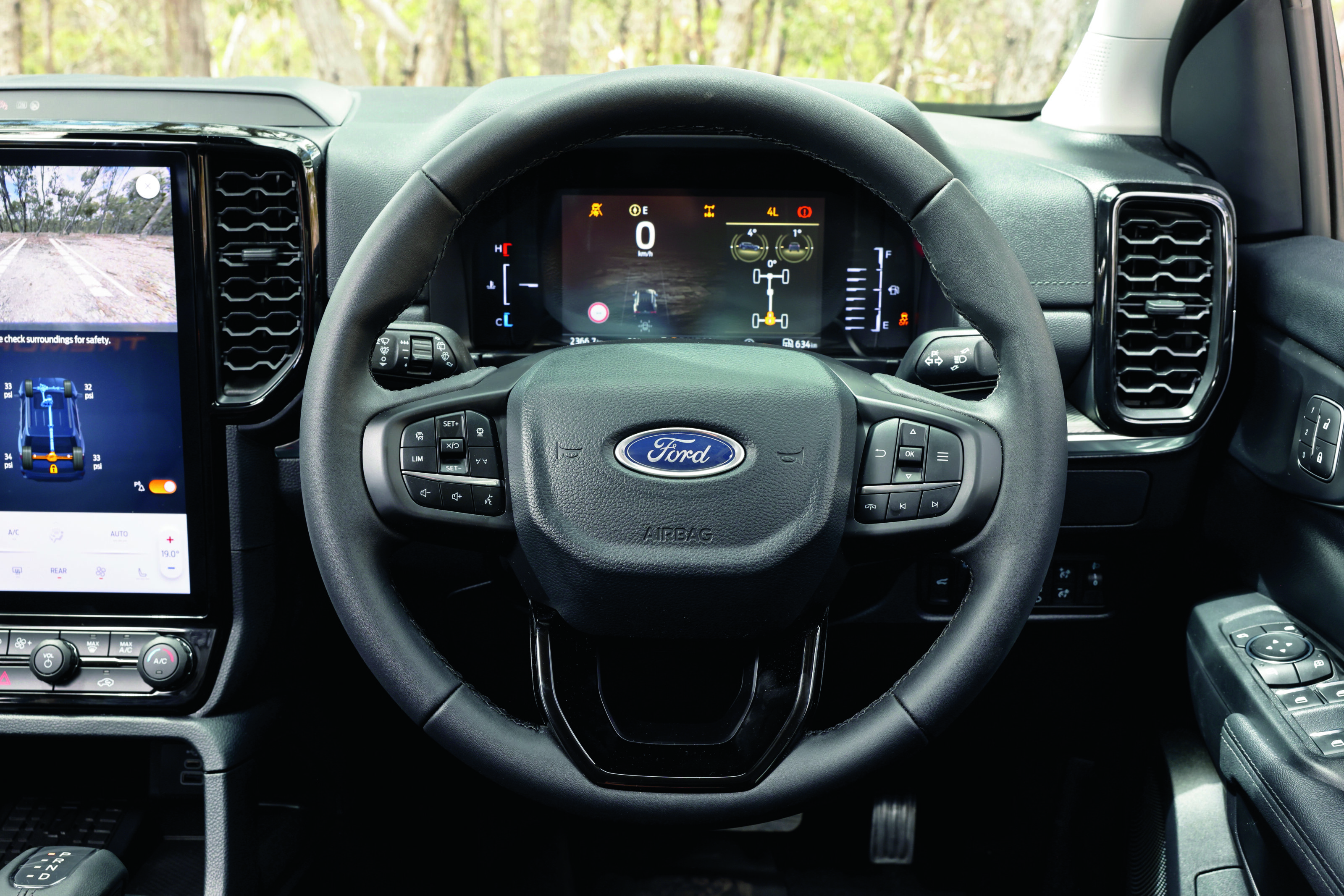
Those who are about to test the Tremor’s chops a little more severely will note the new Bilstein position-sensitive dampers and the 285/65 R17 General Grabber AT3 all-terrain tyres. A word on this little combo: Ford claimed that these dampers would improve ability both on and off-road. I drove a selection of Tremor vehicles on the local press event and the ride was routinely wooden, stiff-legged and harsh, something I wouldn’t have expected in an Everest with this damper and tyre combination.
Further investigation revealed that the tyres were typically inflated to a ruinous 13psi above the placarded pressures. I was fortunate enough to be able to take an Everest Tremor away from the launch, and once returned to the correct pressures, the ride was transformed to something even better than the Everest’s normal plushness. So if you see road tests elsewhere, criticising this vehicle’s ride quality or its unacceptable road noise, now you know why.
In Ford’s defence, it was a seriously hot day, which would cause pressures to creep up, but I also wondered whether a few additional millimetres in ride height would have helped the vehicles tackle an incredibly arduous off-road route through Toolangi State Forest. Deep ruts were the order of that particular day, and there were certain routes where the Everest Sport vehicles we also had along just couldn’t negotiate sections that the Tremor barely squeaked through.
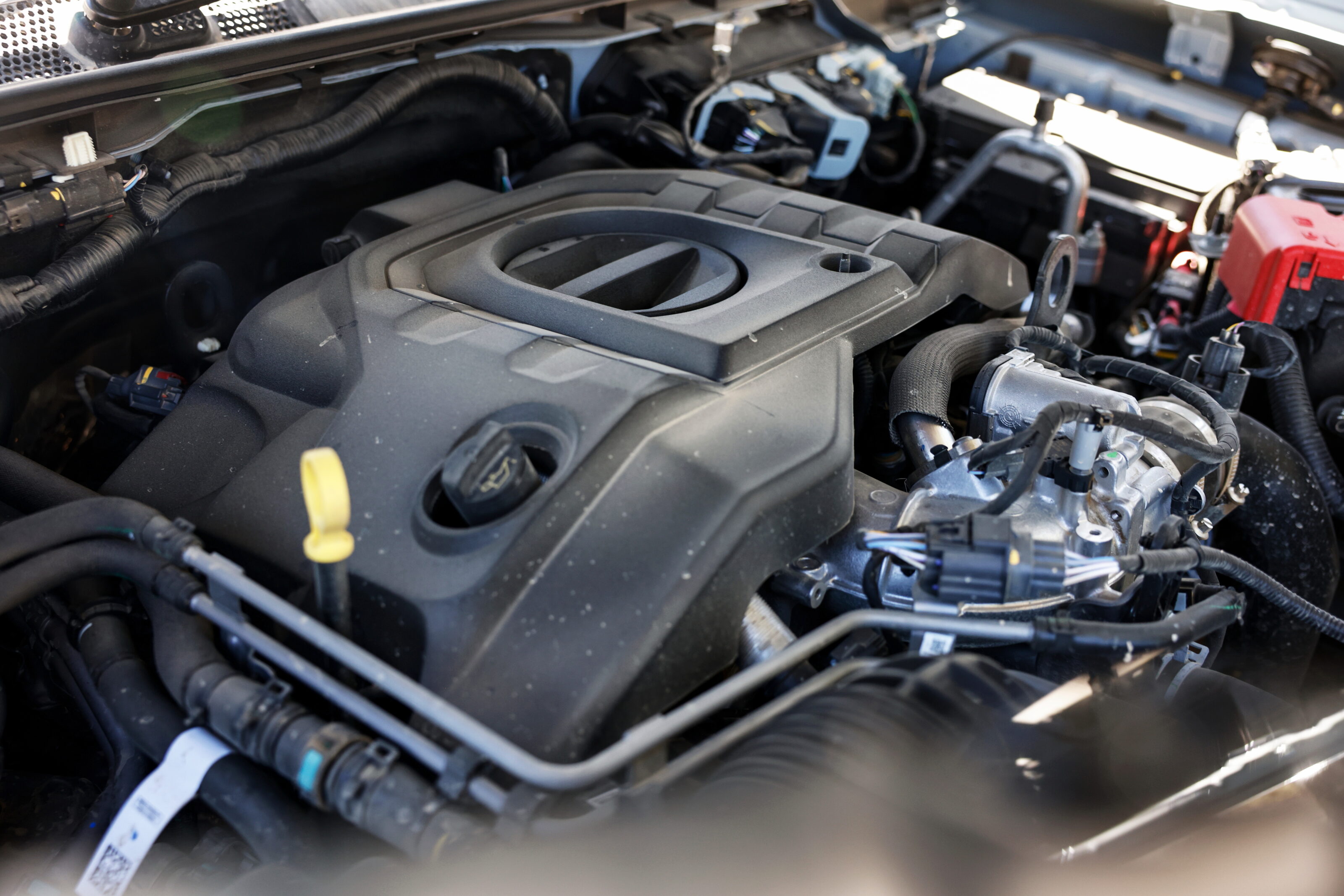
With a ground clearance of 255mm, the Tremor also scores a 30mm extension in track width compared with the best-selling Sport trim. The approach angle of 32 degrees is almost two degrees superior, while the departure angle is 26.8 degrees and the breakover angle 23.9 degrees. Wading depth is unchanged at 800mm and braked towing capability remains at 3500kg. Payload if towing three and a half tonnes is 300kg – slightly better than both the Prado Altitude and, for what it’s worth, the Everest Sport.
The dampers are interesting. They’re a monotube design with a nitrogen-charged external reservoir that have been tuned by Ford’s product development team here in Australia, with the aim of allowing the Everest to tackle terrain such as washboard and gibber with greater resistance to overheating. They pair with a set of longer coil springs. An additional off-road drive mode is incorporated into the terrain management system. As well as the six drive modes you’ll see in other Everest 4×4 models (Normal, Eco, Tow/Haul, Mud/Ruts, Slippery and Sand), the Tremor also nets Rock Crawl mode, designed to optimise traction and deliver optimum torque in extreme circumstances.
Tyre pressure monitoring also features, which is a notable miss across most of the Everest range. The Tremor also gets auxiliary LED lights in the grille, a steel bash plate, matte black mirror housings and doorhandles, matte-black 17-inch alloy wheels, a couple of front tow hooks, composite side steps and orange Tremor badging. The colour palette isn’t very colourful, with Ford offering a choice of the hero Command Grey, Absolute Black and Meteor Grey, but Arctic White is the only non-cost paint finish, the others stinging you for $700.
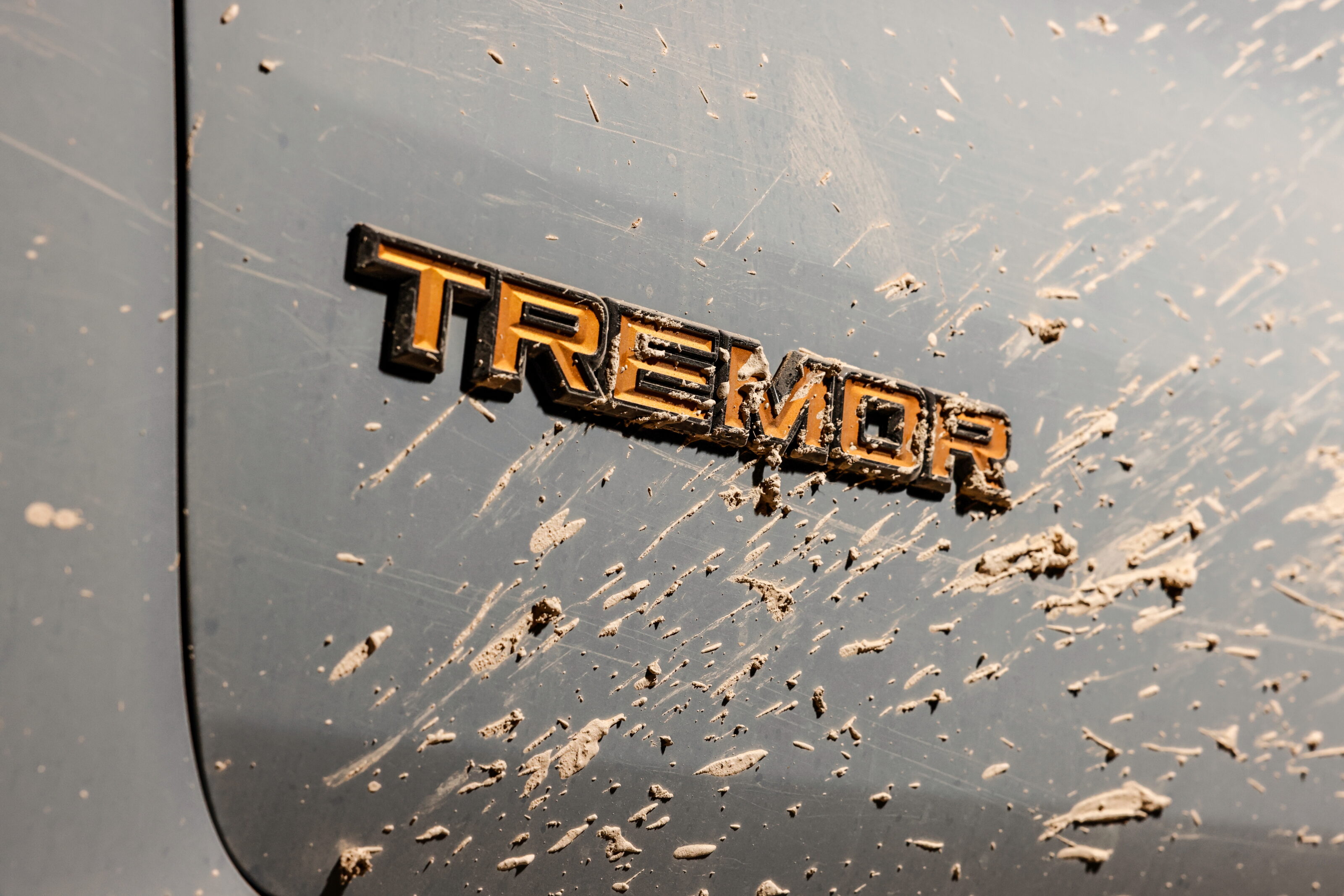
Indoors, you’ll find monogrammed seats, all-weather floor mats and a 400W power inverter located in the rear of the centre console. Ford also offers a $3500 Rough Terrain Pack, which features a rough terrain bar and under vehicle armour, five auxiliary switches in an overhead panel, an $1100 Premium Seats Pack with greater electrical adjustment, and memory along with heating and ventilation. There’s also a $1900 Towing Pack and a $2500 Touring Pack which builds on the Towing Pack by adding a 360-degree camera and Pro Trailer Backup Assist.
The fuel tank is the same as the standard Everest range at 80 litres, although a 140-litre fuel tank is set to be offered. This will carry the same five-year warranty as the vehicle if fitted in factory and a two-year deal if retrofitted. Keep your eyes open for more news on that score. One thing to note is that because of the greater ride height and off-road detailing, the Tremor consumes fuel at a rate of 9.5L/100km, which is up a litre versus the Everest Sport.
In many regards, the Everest Tremor brooks few surprises. We knew the 3.0-litre Lion V6 is a formidable engine, delivering 184kW and 600Nm, and it pairs well with the 10-speed auto. I’d still like to see a set of paddle shifters fitted to the Tremor, as this would improve the impression of control both on-road and off. As it stands, you’ll need to operate a fiddly set of smooth buttons on the side of the gear shifter if you want to dictate gears to the 10R80 transmission.
The standard off-road screen is excellent, showing camera views or, if you prefer, roll and pitch angles. It also allows you to quickly engage hill descent or the rear diff lock. The Tremor uses a form of off-road traction control by braking up front which works reasonably well when low range and the rear diff lock is engaged, but the option of a front diff lock wouldn’t have gone amiss.
The changes turn the Everest from a vehicle that’s competent off road to one that revels in the rough stuff. It’s still not quite in the top league of genuine mud-pluggers, but given the modest $2000 price increase over the Sport, it looks like money well spent. Know both the limits of your abilities and the Tremor and you should be more than happy. It also scores the not insignificant advantage over the Prado Altitude of offering seven seats, a better engine and a functional luggage bay. A great family 4×4 with a little more attitude? That’s about the size of it.
Specs
Engine: 2993cc V6, 24v, dohc, turbodiesel
Max power: 184KW @ 3250rpm
Max torque: 600Nm @ 1750-2250rpm
Transmission: 10-speed auto
Weight: 2550kg
Economy: 9.5L/100km
0-100km/h: 9.2sec
Price: $76,590
On sale: Now

